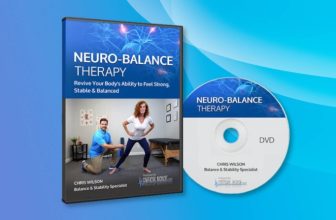Hyperbolic Stretching 3.0 for improved flexibility.

What is Hyperbolic Stretching?
Hyperbolic Stretching is a modern technique designed to drastically improve flexibility in a short period of time by using both physical exercises and mental techniques. The method was created by Alex Larsson, who aimed to help people achieve greater flexibility and mobility without the long hours typically required by traditional stretching programs. According to Larsson, many people struggle with flexibility due to a variety of factors, including tight muscles, poor posture, or even an overactive nervous system that resists stretching. The solution, he proposed, lies in using specific neurological triggers to break these barriers and enable faster, more efficient flexibility improvements.

The 3.0 version of Hyperbolic Stretching builds on previous versions, introducing refined techniques and emphasizing a more streamlined approach. It is marketed as a time-efficient, no-equipment-required system that can be performed by anyone, regardless of age or experience level. According to the program, all it takes is just 8 minutes a day of dedicated stretching, which promises significant results over a relatively short time period.
The Claims of Hyperbolic Stretching 3.0
Hyperbolic Stretching 3.0 promises several key benefits, and it’s essential to critically examine these claims to determine their validity.
Flexibility Gains in Short Time Frames
One of the primary claims of Hyperbolic Stretching is that practitioners can see noticeable improvements in flexibility in as little as 4 weeks, with just 8 minutes of practice a day. Traditional stretching methods often require longer sessions over a more extended period to produce similar results, so this claim is enticing to those seeking quick improvements.
The program’s focus on progressive stretching and the engagement of the nervous system is supposed to accelerate this process. The creators argue that, because the nervous system is involved, the stretches become more efficient, allowing flexibility to increase faster and more consistently. Users report being able to touch their toes within a few weeks or even perform splits, which are considered advanced flexibility feats.
Time-Efficiency
One of the most marketed aspects of Hyperbolic Stretching is the time efficiency. Unlike traditional programs that require long stretching sessions, Hyperbolic Stretching promises that individuals can achieve flexibility gains with only 8 minutes of stretching per day. This makes it highly attractive for people with busy schedules or those who find it difficult to devote large chunks of time to exercise.
However, the effectiveness of a program that claims such rapid results within such a brief amount of time requires closer inspection, especially when compared to the scientific literature on flexibility development.
Injury Prevention and Rehabilitation
Another key claim of Hyperbolic Stretching 3.0 is its ability to prevent injuries and aid in rehabilitation. According to the program, increasing flexibility helps relieve tension and pressure in joints, which reduces the likelihood of strains and sprains during physical activity. This claim is especially compelling for athletes, dancers, and anyone who engages in high-impact or repetitive movements.
Improved flexibility is indeed associated with a lower risk of certain types of injuries. By increasing the range of motion in joints, you reduce the risk of overstretching muscles and tendons. However, as with all fitness programs, it’s essential to practice proper technique and not push beyond the body’s natural limits.
Improved Mobility for Older Adults
Flexibility becomes increasingly important as we age. Tight muscles and stiff joints are common complaints among older adults, and Hyperbolic Stretching 3.0 is marketed as an ideal solution for improving mobility in this demographic. The program claims to reduce stiffness, alleviate pain, and improve range of motion, which can be crucial for older individuals who struggle with the physical limitations of age.
Given the importance of maintaining mobility for aging adults, this claim holds significant appeal. Improved flexibility can aid in activities of daily living, reduce discomfort from conditions like arthritis, and prevent falls or other injuries caused by reduced joint mobility.
Mental Benefits
In addition to the physical benefits, Hyperbolic Stretching also promotes mental well-being. Some practitioners report feeling less stressed, more relaxed, and more focused after completing their stretching routines. The mental focus required to perform the stretches with proper form and control also acts as a form of mindfulness, which can contribute to stress reduction and improved mood.
However, while there is some evidence suggesting that yoga and stretching can reduce stress and anxiety, further research would be needed to confirm whether Hyperbolic Stretching specifically offers these benefits.

The Practicality of Hyperbolic Stretching 3.0
One of the most attractive aspects of Hyperbolic Stretching 3.0 is its practicality. The program is designed to be performed anywhere and requires minimal equipment. In contrast to traditional stretching routines that often require special equipment (such as mats, straps, or resistance bands), Hyperbolic Stretching can be done in any environment, from your living room to the office, without the need for any special gear.
Accessibility for All Levels
The program’s creators emphasize that it is suitable for people of all fitness levels. Whether you’re a beginner or an advanced athlete, Hyperbolic Stretching 3.0 claims to cater to your needs by offering progressions and variations for each stretch. This makes the program potentially appealing to a broad audience, from those just starting to work on their flexibility to seasoned athletes looking for an efficient way to enhance their range of motion.
Moreover, the time commitment of just 8 minutes per day allows individuals with busy schedules or those new to flexibility training to gradually incorporate the practice into their routines. This low-barrier approach could encourage people who might feel intimidated by longer or more complicated stretching regimens to give it a try.
No Special Equipment Required
As mentioned, one of the biggest selling points of Hyperbolic Stretching is its minimal equipment requirements. Unlike yoga or Pilates, which often rely on mats, blocks, or straps, Hyperbolic Stretching requires only your body and a little space. This makes it a convenient option for those who travel often, those who prefer home workouts, or individuals with limited access to a gym or fitness studio.
Additionally, the program’s 8-minute duration means that even individuals who struggle to find long windows of time for exercise can participate. This flexibility is one of the primary reasons the program appeals to people with demanding careers, family responsibilities, or a busy lifestyle in general.
Safety Considerations and Injury Risk
While Hyperbolic Stretching is designed to be safe and accessible, it’s crucial to consider the potential risks associated with any stretching program. Stretching, especially when performed improperly, can lead to injuries like strains or overstretching of muscles and ligaments. While the program emphasizes mindful stretching and proper technique, it is essential for individuals to listen to their bodies and avoid pushing beyond their limits.
For those with pre-existing conditions such as joint issues or chronic back pain, it’s wise to consult with a healthcare professional before starting the program. Since Hyperbolic Stretching aims to quickly improve flexibility, there may be an increased risk of overextending muscles if practitioners don’t follow the program’s guidelines carefully.
In terms of safety, one of the claims of the program is that it helps to prevent injuries by improving muscle elasticity and joint range of motion. However, individuals should still be cautious, especially when performing deeper stretches or when attempting advanced moves like the splits. As with any flexibility program, gradual progress and proper form are key to avoiding injury.

User Experiences and Testimonials
Another way to assess the practicality and effectiveness of Hyperbolic Stretching 3.0 is by looking at real-world user experiences. Testimonials play an important role in determining whether the program lives up to its promises.
Positive User Feedback
Many users report significant improvements in flexibility after just a few weeks of practicing Hyperbolic Stretching. Reviews across various platforms (from online forums to YouTube testimonials) often highlight increased range of motion in the hips, hamstrings, and lower back. Some users even claim to have achieved the splits or regained flexibility they hadn’t experienced in years, with many attributing their progress to the simplicity and effectiveness of the program.
For example, athletes and dancers have shared how Hyperbolic Stretching helped them achieve deeper, more controlled stretches without the typical discomfort they experienced with traditional methods. These users report feeling looser after each session and notice a decrease in muscle stiffness, particularly after long periods of sitting or intense physical activity.
Older adults who have tried the program also provide positive feedback, citing improved joint mobility, decreased stiffness, and better posture as notable benefits. Many of these individuals report that Hyperbolic Stretching has given them a more active lifestyle and helped reduce chronic aches and pains associated with aging.
Common Criticisms
Despite the positive reviews, there are some criticisms of the program as well. A common complaint is that while the 8-minute daily routine is highly convenient, it may not be enough for individuals who require a more structured, intensive approach to flexibility. Some users believe that longer sessions or more advanced stretches could provide better results, especially for those who are highly inflexible or have specific flexibility goals.
Another critique revolves around the claim that Hyperbolic Stretching can deliver significant results with minimal effort. Some people feel that the program oversimplifies the process of flexibility development and fails to take into account the complexity of individual body types, muscle structures, and existing mobility issues. They argue that flexibility is a multifaceted skill that may require a combination of techniques, including strength training and mobility work, in addition to stretching.
Additionally, a few users have found the mental component (neurological activation) to be difficult to fully grasp or integrate into their routine, leading to frustration. Stretching with the intent to activate specific parts of the nervous system can require practice and mindfulness, which not everyone is comfortable with or able to focus on.
Conclusion

Hyperbolic Stretching 3.0 offers an intriguing and modern approach to flexibility training, promising quick, efficient results with minimal time commitment. The claims about rapid flexibility gains, injury prevention, and enhanced mobility are appealing, particularly for those looking for a time-efficient solution. However, while there is some scientific backing for the program’s approach, further research is needed to fully validate the program’s promises. Ultimately, Hyperbolic Stretching may be a useful tool for improving flexibility and mobility, but it’s important to approach the program with realistic expectations and combine it with other forms of exercise for optimal health.











